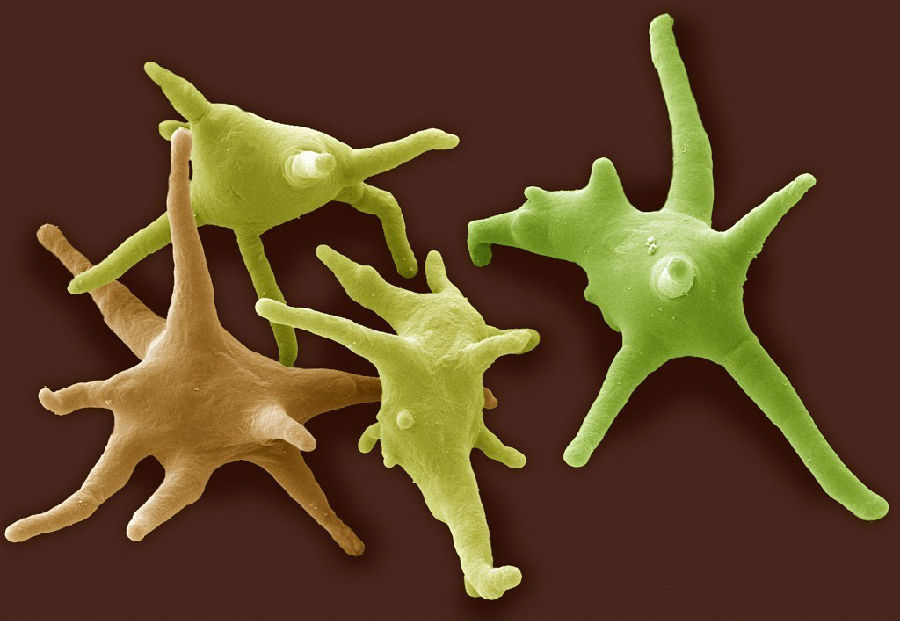He offered no interpretations, but simply the facts of what he had found, accompanied by exquisite drawings. He sent reports on almost everything that could be usefully examined—bread mold, a bee's stinger, blood cells, teeth, hair, his own saliva, excrement, and semen (these last with fretful apologies for their unsavory nature)—nearly all of which had never been seen microscopically before.
列文虎克羅列了他所發現的一些事實,并配以一些精美的繪圖,卻沒有任何解釋和說明。他所提交的報告幾乎包括了所有可以用于檢測的事物——面包霉、蜜蜂螫針、血細胞、牙齒、頭發,他自己的唾液、精液甚至大便(提及后面兩樣時,他還說了為它們的惡臭表示歉意的話)——所有這些以前幾乎都沒有用顯微鏡觀察過。
After he reported finding "animalcules" in a sample of pepper water in 1676, the members of the Royal Society spent a year with the best devices English technology could produce searching for the "little animals" before finally getting the magnification right. What Leeuwenhoek had found were protozoa. He calculated that there were 8,280,000 of these tiny beings in a single drop of water—more than the number of people in Holland. The world teemed with life in ways and numbers that no one had previously suspected.
1676年,列文虎克在一份報告中聲稱,他在一份胡椒水試劑中發現了微生動物。皇家學會動用了英國所能生產的一切先進設備來尋找這種“小動物”,直到1年以后才最終解決了放大倍率的問題。列文虎克發現的是原蟲。據他計算,一點水中有8280000這樣的微生物,比荷蘭的人口還多。世界充斥著這樣的生命,其生存方式和數目遠遠超出了以前人們的想像。

Inspired by Leeuwenhoek's fantastic findings, others began to peer into microscopes with such keenness that they sometimes found things that weren't in fact there. One respected Dutch observer, Nicolaus Hartsoecker, was convinced he saw "tiny preformed men" in sperm cells. He called the little beings "homunculi" and for some time many people believed that all humans—indeed, all creatures—were simply vastly inflated versions of tiny but complete precursor beings.
在列文虎克驚人發現的鼓舞下,其他人開始目不轉睛她盯著顯微鏡從事研究,他們的目光有時是過于敏銳了,以致有時他們發現了一些實際上不存在的事物。一位令人尊敬的荷蘭研究人員尼古拉·哈茨奧克聲稱,他在精子細胞中看到了“預先成形的小人”,他為這些小生物取名為“侏儒小人”。有一段時期,許多人相信所有的人——事實上,所有生物——都不過是小而完整的母體的放大體。












